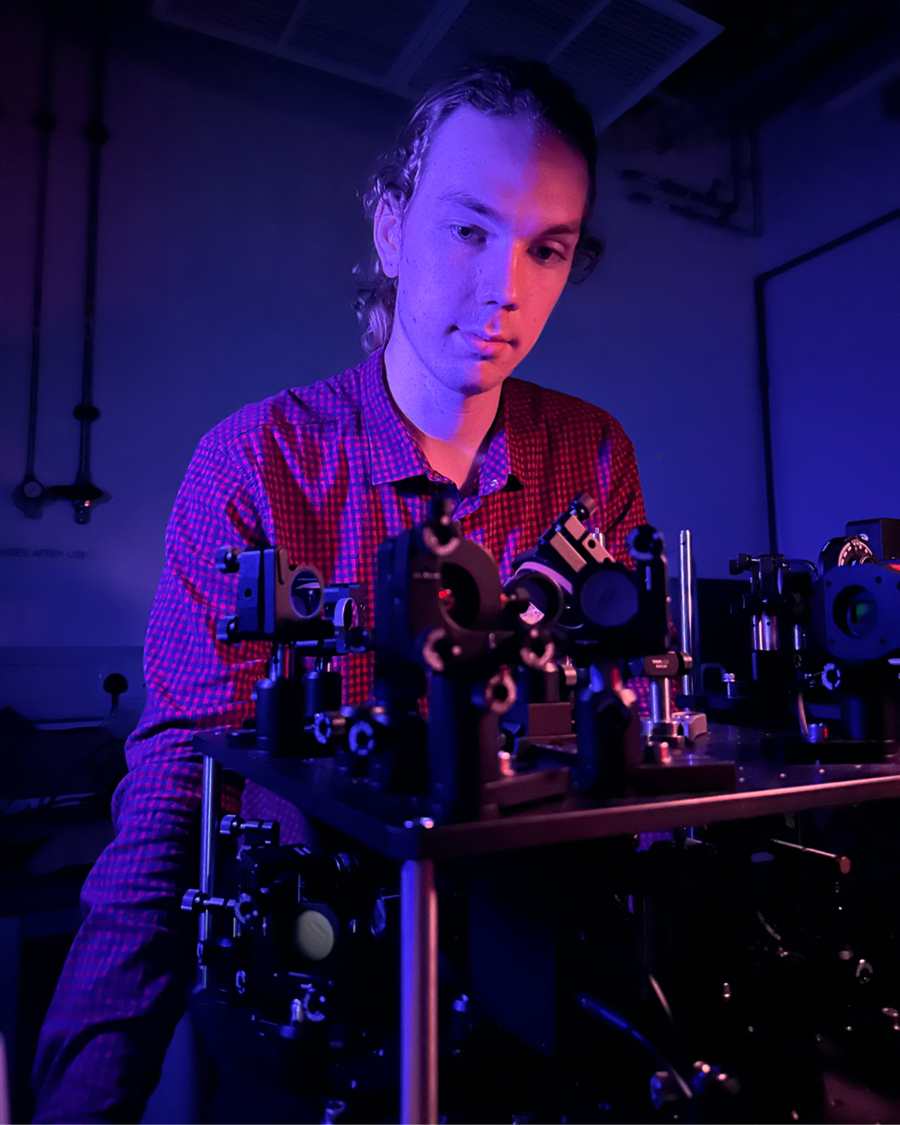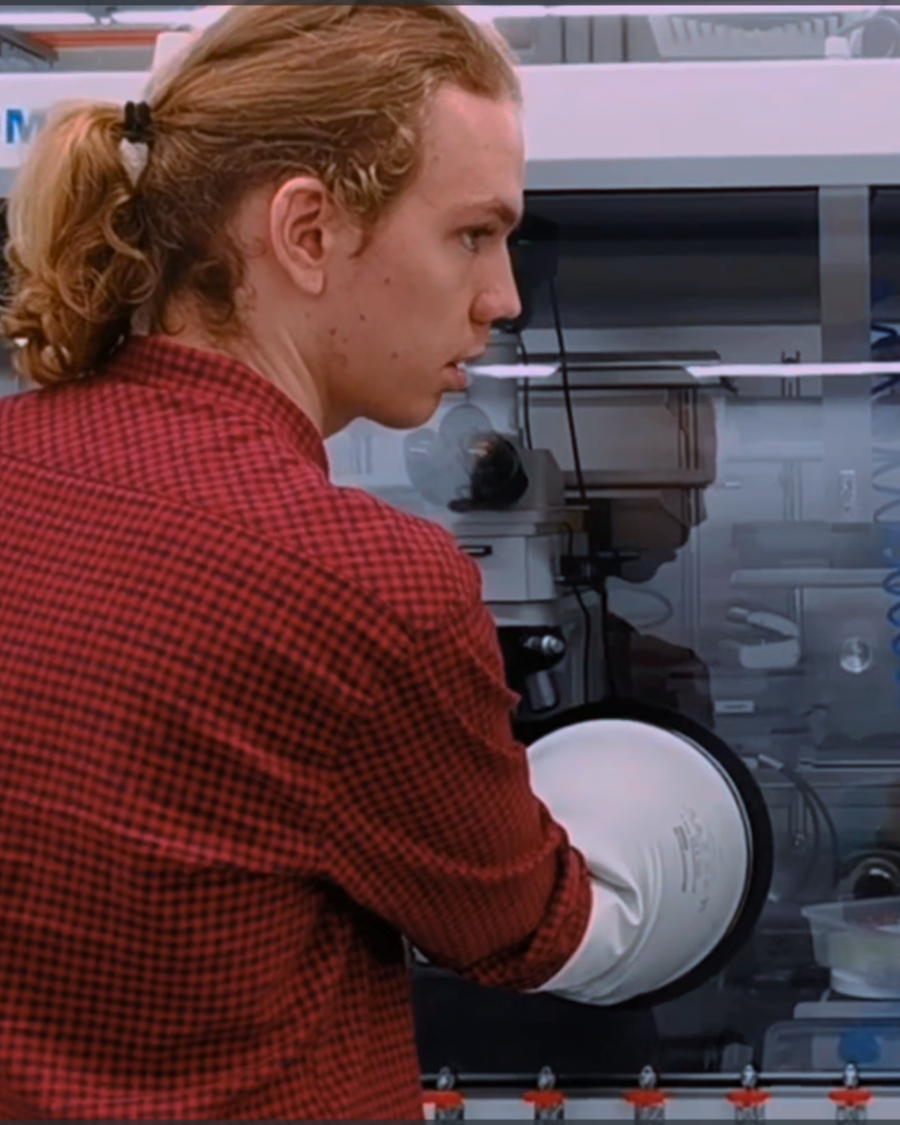Exploring the nanoscale world of 2D materials with Timofey Savilov
Winner of the Graphene Week Impact Leaders Award 2024, Timofey Savilov began his journey at a research institute in Singapore founded by Nobel Laureate Konstantin Novoselov, seeking hands-on experience beyond his computational background. Now a PhD researcher, he explores the curious behavior of magnetic nanodrums and the unexpected phenomena they reveal.

Even though graphene and 2D materials are already 20 years old, we still find them surprisingly useful for entirely new applications."
Graphene Week Impact Leader 2024

It’s like a sandbox filled with toys that haven’t been played with yet."

We need to think outside the box to continue our technological adventure, and 2D materials are one promising direction."
To learn more about Timofey’s work and perspective, we asked him a few questions about his journey, research, and experience at Graphene Week 2024. Here’s what he shared with us:
How did you first start working with graphene/2D materials?
I learned about the new institute opened by Konstantin Novoselov in Singapore and applied there for my PhD. Before that, I had mainly a computational background and wanted to gain more hands-on experience in science.
Why are you excited to work on graphene/2DM?
Even though Graphene and 2D materials are already 20 years old, we still find them surprisingly useful for new different applications. While scientists are working on the implementation of Graphene into industry, research teams are still obtaining unexpected results in 2D world.
Who has been the biggest influence or mentor in your career so far?
First of all, I have to mention my mentor, teacher, and friend, Dr. Makars Šiškins. He taught me a great deal and always supported me along the way. I must also mention my PI, Professor Novoselov, who has provided many opportunities and guided me through my PhD so far.
How did you first become interested in your current research project?
Around two weeks after I started, I attended Makars' seminar and was blown away by how well he presented his results, both informative and engaging. It was a joy to witness. I had a chat with him afterward and realised that I wanted to pursue nanomechanics.
What’s your research focus? What is your current research goal?
I primarily work with magnetic 2D material nanodrums made from different TMDCs. Our group developed a theory for such systems, conducted experiments, and discovered new unexpected results for 2D magnets as they move in external magnetic field. My current goal is to finish a major study on them, get it published, and defend it.
In what way can graphene and other 2DM improve this area?
By definition, 2D magnets wouldn’t be possible without 2D materials. But seriously, these materials significantly raise the bar for what we can achieve in electronics and other areas, as they have huge sensitivity to mechanical and electromagnetic phenomena. Also, creating twisted structures makes these devices even more bizarre and attractive for further study.
Why do you feel your research is important, and what benefits could it bring to society?
Humanity seems to be nearing the limits of conventional material applications. We need to think outside the box to continue the technological progress adventure, and 2D materials are one promising direction. Nanomechanics can offer advanced sensors and a deeper understanding of materials, but I firmly believe there’s still much more to discover.
As an early career researcher, where do you see your field going?
There is huge potential for growth in nanomechanics, and it's actively being explored. New materials, combinations of old ones, better theories, and better integration are all being developed. It’s like a sandbox filled with toys that haven’t been played with yet. Therefore, I see strong quantitative growth in the field.
What do you enjoy the most in your career path?
The people I meet, the unpredictability, and the freedom.
Do you have a favorite anecdote or moment from your research journey?
When I went to Graphene Week and met people who had worked with Makars before, I realized that the scientific world is actually quite small and cozy.
What is the most challenging part of your current work?
Project management and time management are crucial for a PhD. The need to frequently switch between different tasks requires a lot of energy and skill.
If you could work on any dream project involving graphene/2D materials, what would it be?
It would probably be something very big, like applying new materials to space rockets, or something very small, like applying them to the human body.
What are your plans for the future?
Good question! I think about my post-PhD life a lot, but right now I don’t have a clear answer. What I can say is that I will try to follow my passion, as it’s the only way to keep going.
Tell us about your experience at Graphene Week 2024. How was this event for you?
The event was well-organised, and I really enjoyed making new connections and seeing the presentations. I hope there will be more exciting events like this in the future.
How did you feel about winning the Graphene Week Impact Leaders Award?
I was pleasantly surprised! It’s an honor for me, and I hope this award will encourage more people to join the exciting field of 2D materials.
Something else you want to add?
To anyone reading this: No matter how much the world changes or challenges you, always focus on the things that make you whole. Don’t be afraid to challenge yourself—you can do it!
Timofey’s work reflects a genuine curiosity and a drive to understand what lies beneath the surface of the materials we think we know. With a clear passion for discovery, he’s contributing to a field that still holds many unanswered questions. As he moves forward, one step at a time, his focus remains on exploring without losing sight of what makes the journey meaningful.




